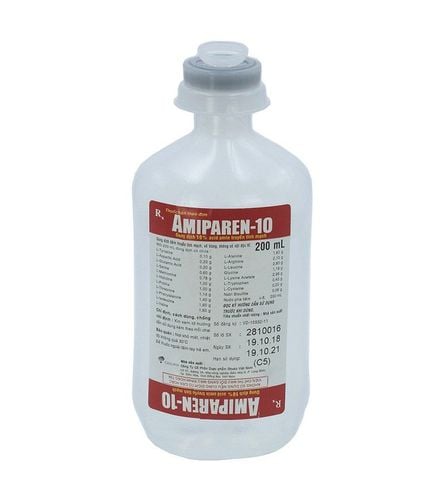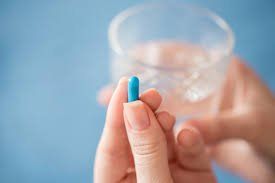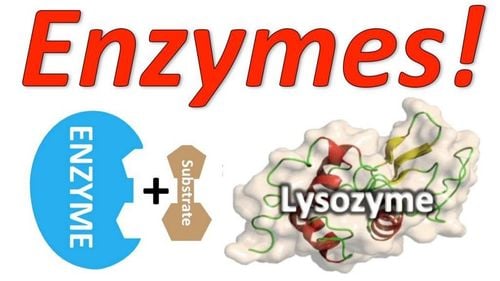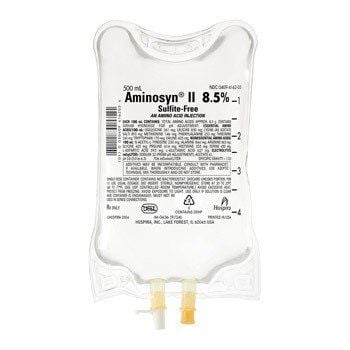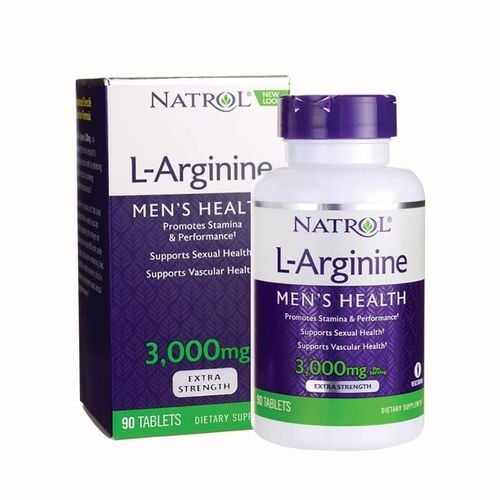This is an automatically translated article.
Protein metabolism in the body includes various biochemical processes that play a role in protein and amino acid synthesis through anabolism, and protein breakdown by catabolism.1. Overview of protein metabolism in the body
Protein synthesis steps include transcription, translation, and post-translational modifications. During transcription, RNA polymerase transcribes the coding region of the DNA in the cell creating an RNA strand, specifically messenger RNA (mRNA). This mRNA sequence contains codons: 3 long nucleotide segments that code for a specific amino acid. Ribosomes translate codons into their respective amino acids.In humans, non-essential amino acids are synthesized from intermediates in major metabolic pathways such as the Citric Acid cycle. Essential amino acids must be consumed and made in other organisms. Amino acids are linked together by peptide bonds to form a polypeptide chain. This polypeptide chain then undergoes post-translational modifications and is sometimes joined with other polypeptide chains to form a fully functional protein.
Proteins in the body that come from the diet will be broken down into individual amino acids by different enzymes and hydrochloric acid present in the digestive tract. These amino acids are absorbed into the bloodstream for transport to the liver and transported to the rest of the body. Absorbed amino acids are commonly used to make functional proteins, but can also be used for energy.
Besides synthesis, proteins can be broken down by enzymes called peptidases or can be degraded by denaturation. Proteins can denature under environmental conditions where proteins cannot be made.
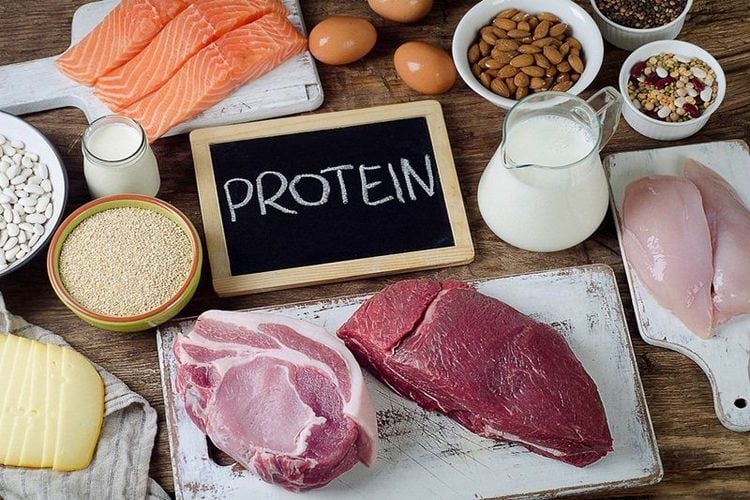
Chuyển hóa protein trong cơ thể gồm các quá trình sinh hóa khác nhau
2. Protein synthesis
Protein assimilation or protein synthesis is the process by which proteins are formed from amino acids. It consists of five processes: amino acid synthesis, transcription, translation, post-translational modification, and protein coiling. Protein is made of amino acids. In humans, some amino acids can be synthesized using already available intermediates. These amino acids are called non-essential amino acids. Essential amino acids for synthesis need intermediates not found in the human body. These intermediates must be obtained from foods. Thus, in order to synthesize proteins, the body must undergo successive steps of amino acid synthesis and subsequent polypeptide synthesis.During transcription, RNA polymerase “reads” a strand of DNA and produces an mRNA strand that can be further translated. To initiate transcription, the transcribed DNA fragment must be accessible (i.e. not in a tightly coiled state). Once the DNA fragment is accessible, RNA polymerase can initiate transcription of the coding DNA strand by splicing the RNA nucleotides with the template DNA strand. During the initial transcription phase, RNA polymerase searches for the promoter region on the DNA template strand. When RNA polymerase binds to this region, it begins to "read" the template DNA strand in the 3' to 5' direction. RNA polymerase attaches complementary RNA residues to the template DNA strand (Uracil will be used instead of Thymine). New nucleotides are covalently bonded to each other. This mRNA strand is synthesized in the 5' to 3' direction. When the RNA reaches the terminator sequence, it separates from the DNA template strand and terminates the mRNA strand. Transcription is regulated in the cell through transcription factors. Transcription factors are proteins that bind to regulatory sequences in the DNA strand such as promoter or operator regions. Proteins that bind to these regions can either directly stop or allow RNA polymerase to read the DNA strand, or can signal other proteins to stop or allow RNA polymerase to be read.
During translation, the ribosome converts the mRNA sequence (messenger RNA) into an amino acid sequence. After initiation of translation, the ribosome enters a phase of repeated cyclic elongation.
When translation is finished, the body will take a step to repair or adjust itself. Once the peptide chain is synthesized, it still has to be modified. Post-translational changes can occur before or after protein folding. Common biological reactions for post-translational modification of the peptide sequence include methylation, phosphorylation, and disulfide bond formation. Methylation usually occurs for arginine or lysine and involves the addition of a methyl group to nitrogen (hydrogen substitution). The R groups on these amino acids can be methylated multiple times as long as the nitrogen binding does not exceed 4. Methylation reduces the ability of these amino acids to form hydrogen bonds, so methylated arginine and lysine can have properties different from their standards. . Phosphorylation is common for serine, threonine, and tyrosine and involves the substitution of the hydrogen on the alcohol group at the R-terminus with a phosphate group. This adds an extra negative charge on the R groups and so will change the way the amino acids work. Disulfide bond formation is the creation of disulfide bridges (covalent bonds) between two cysteine amino acids in a chain that adds stability to the folded structure.
The polypeptide chain in the cell is not necessarily linear; it can become branched or coil itself. The polypeptide chains coil in a specific way depending on the solution containing them. The fact that all amino acids contain R groups with different properties is the main reason why proteins fold. In a hydrophilic environment such as the cytosol, hydrophobic amino acids will be concentrated at the core of the protein, while hydrophilic amino acids will be on the outside. This is entropy advantageous because water molecules can move freely around hydrophilic amino acids much more than hydrophobic amino acids. In a hydrophobic environment, hydrophilic amino acids will be concentrated in the core of the protein, while hydrophobic amino acids will be on the outside. Since the new hydrophilic amino acid interactions are stronger than the hydrophobic-hydrophilic interactions, this is enthalpy favorable.
When a polypeptide chain is completely coiled, the final protein is synthesized. Often multiple subunits will combine to produce a fully functional protein, although physiological proteins actually exist containing only one polypeptide chain. Proteins can also combine with other molecules such as the heme group in hemoglobin, a protein responsible for transporting oxygen in the blood.
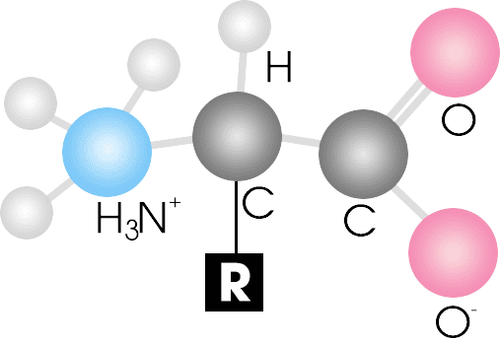
Đồng hóa protein là quá trình protein được hình thành từ các axit amin
3. Protein breakdown process
Protein catabolism is the process by which proteins are broken down into their amino acids. This is also known as proteolysis and can be followed by amino acid breakdown.Breakdown of proteins through enzymes
Protease
Originally thought to only break down enzymatic reactions, but proteases (also known as peptidases) actually help catabolize proteins through the cleavage and creation of new proteins which did not exist before. Protease also helps to regulate metabolic pathways. This process saves as much energy as possible and avoids useless cycles. Useless cycles occur when the catabolic and anabolic pathways both act simultaneously and at the same rate for the same reaction. Also, energy is lost through useless cycles. Protease stops this cycle from happening by changing the rate of one of the pathways, or by cleaving an important enzyme. Proteases are also non-substrate-specific, allowing for a great deal of diversity within the cell and other proteins, as they can be cleaved much more easily in an energy efficient manner.
Because many proteases are nonspecific, they are highly regulated within the cell. Without regulation, proteases destroy many proteins essential for physiological processes. The body regulates proteases through protease inhibitors. Protease inhibitors can be proteins, small peptides, or other molecules. There are two types of protease inhibitors: reversible and irreversible. Reversible protease inhibitors form non-covalent interactions with the protease that limit its function. They can be competitive inhibitors or non-competitive inhibitors. Competitive inhibitors will compete with the peptide for binding to the active site of the protease. Noncompetitive inhibitors bind to the protease while the peptide remains bound but do not allow the protease to cleave the peptide bond. Protease inhibitors irreversibly alter the active site of the protease covalently so that it cannot cleave the peptide.
Exopeptidases
Exopeptidases are enzymes that can cleave the end of amino acid side chains mainly through the addition of water. The enzyme exopeptidase exists in the small intestine. These enzymes have two classes: aminopeptidases which are a brush border enzyme and carboxypeptidases which are from the pancreas. Aminopeptidases are enzymes that remove amino acids from the starting amino end of a protein. They are present in all living organisms and are important because they perform many cellular tasks to maintain stability. This form of peptidase is a zinc-metabolizing enzyme and it is inhibited by the transition state analog, preventing substrate binding and reducing the reaction rate. Carboxypeptidase cleaves at the carboxyl end of the protein. While still able to catabolize proteins, they are more commonly used in post-transcriptional modifications.
Endopeptidases
Endopeptidases are enzymes that add water to an internal peptide bond in a peptide chain and break it. Three common endopeptidases that come from the pancreas are pepsin, trypsin, and chymotrypsin. Chymotrypsin performs hydrolysis and cleavage after aromatic residues remain. The main amino acids involved are serine, histidine and aspartic acid. They both have a role in cleavage of peptide bonds. These three amino acids are known as catalytic triplets, which means that all three must be present in order to function properly. Trypsin cleaves after long positively charged residues and has a negatively charged binding pocket at the active site. Both chymotrypsin and trypsin are produced as zygotes, meaning that they are initially found in an inactive state and, after cleaving via hydrolysis, they become activated. Non-covalent interactions such as hydrogen bonding between the peptide backbone and the catalytic triad speed up the reaction, allowing these peptidases to cleave multiple peptides efficiently.
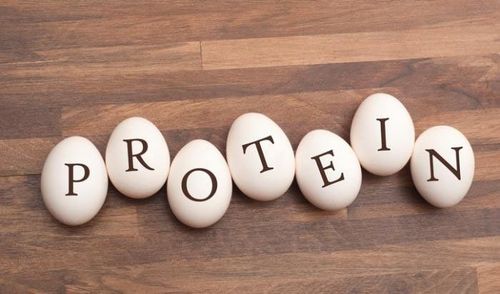
Chuyển hóa protein trong cơ thể giúp tổng hợp protein cần thiết
pH
Cellular proteins are kept at a relatively constant pH to prevent changes in the protonation state of amino acids. If the pH decreases, some amino acids in the polypeptide chain can become protonated. If the pH is increased, some amino acids in the chain can be deprotonated. Since many amino acids interact with other amino acids based on electrostatic attraction, changing charge can disrupt these interactions. Losing these interactions changes the protein structure, but most importantly, it alters the protein's function, which can be beneficial or harmful. A dramatic change in pH can even disrupt many of the interactions that amino acids make and denature proteins.
Temperature
When the temperature in the environment increases, the molecules move faster. Hydrogen bonding and hydrophobic interactions are important stabilizing forces in proteins. If the temperature increases and the molecules containing these interactions move too quickly, the interactions will be damaged or even broken. At elevated temperatures, these interactions cannot form and a functional protein is denatured. However, it relies on two factors; the type of protein used and the amount of heat applied. The amount of heat applied determines whether this change in the protein is permanent or if it can be converted back to its original form.
Please dial HOTLINE for more information or register for an appointment HERE. Download MyVinmec app to make appointments faster and to manage your bookings easily.




